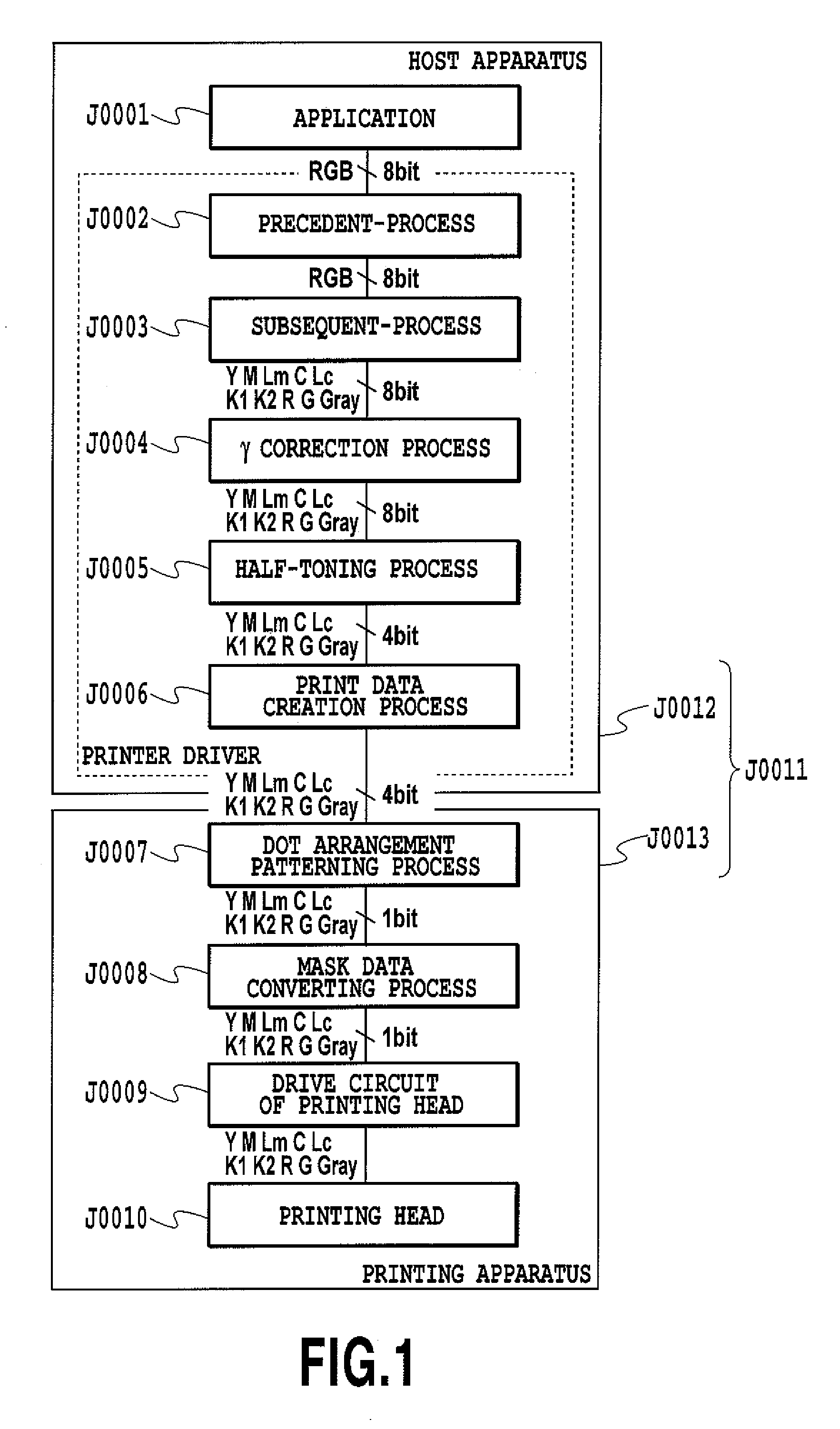Ink jet printing apparatus and ink jet printing method
a printing apparatus and ink jet technology, applied in printing mechanisms, spacing mechanisms, printing, etc., can solve the problems of difficult to reduce the amount of ink ejection thereafter, hardly possible to suppress the increase in ink ejection, and the density of a printed image may become lower than intended
- Summary
- Abstract
- Description
- Claims
- Application Information
AI Technical Summary
Benefits of technology
Problems solved by technology
Method used
Image
Examples
Embodiment Construction
[0059] Descriptions will be provided below for embodiments of the present invention by referring to the drawings.
1. Basic Configuration
1.1 Outline of Printing System
[0060]FIG. 1 is a diagram for explaining a flow in which image data are processed in a printing system to which an embodiment of the present invention is applied. This printing system J0011 includes a host apparatus J0012 which generates image data indicating an image to be printed, and which sets up a user interface (UI) for generating the data and so on. In addition, the printing system J0011 includes a printing apparatus J0013 which prints an image on a printing medium on the basis of the image data generated by the host apparatus J0012. The printing apparatus J0013 performs a printing operation by use of 10 color inks of cyan (C), light cyan (Lc), magenta (M), light magenta (Lm), yellow (Y), red (R), green (G), black 1 (K1), black 2 (K2) and gray (Gray). To this end, a printing head H1001 for ejecting these 10 c...
PUM
 Login to View More
Login to View More Abstract
Description
Claims
Application Information
 Login to View More
Login to View More - R&D
- Intellectual Property
- Life Sciences
- Materials
- Tech Scout
- Unparalleled Data Quality
- Higher Quality Content
- 60% Fewer Hallucinations
Browse by: Latest US Patents, China's latest patents, Technical Efficacy Thesaurus, Application Domain, Technology Topic, Popular Technical Reports.
© 2025 PatSnap. All rights reserved.Legal|Privacy policy|Modern Slavery Act Transparency Statement|Sitemap|About US| Contact US: help@patsnap.com



